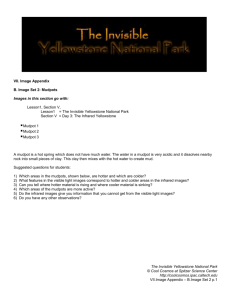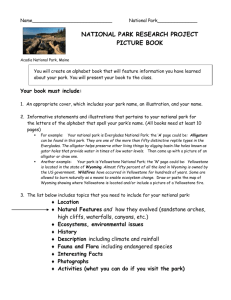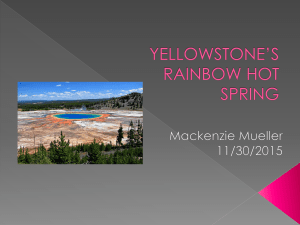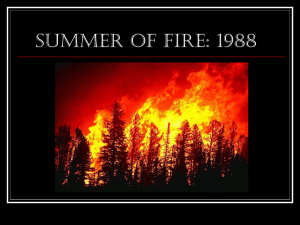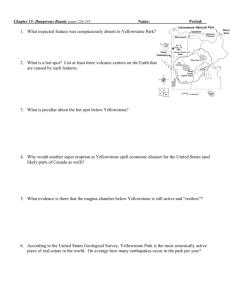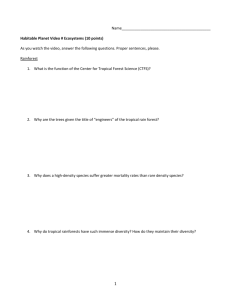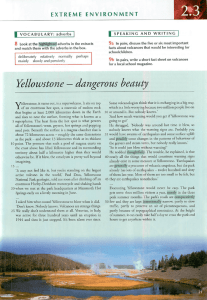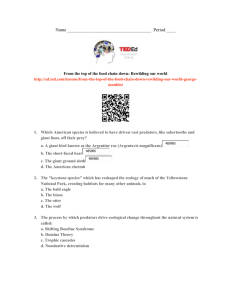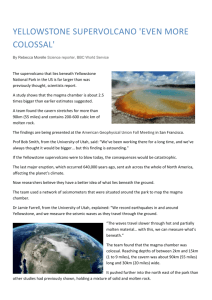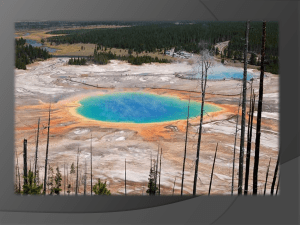MS Word version
advertisement
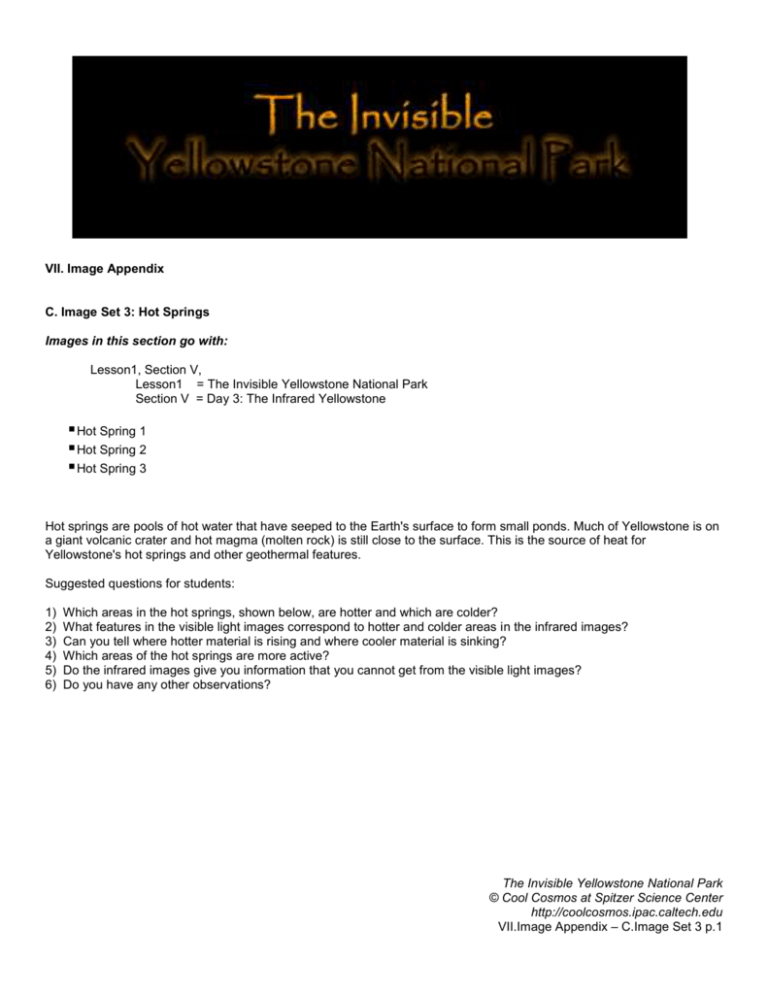
VII. Image Appendix C. Image Set 3: Hot Springs Images in this section go with: Lesson1, Section V, Lesson1 = The Invisible Yellowstone National Park Section V = Day 3: The Infrared Yellowstone Hot Spring 1 Hot Spring 2 Hot Spring 3 Hot springs are pools of hot water that have seeped to the Earth's surface to form small ponds. Much of Yellowstone is on a giant volcanic crater and hot magma (molten rock) is still close to the surface. This is the source of heat for Yellowstone's hot springs and other geothermal features. Suggested questions for students: 1) 2) 3) 4) 5) 6) Which areas in the hot springs, shown below, are hotter and which are colder? What features in the visible light images correspond to hotter and colder areas in the infrared images? Can you tell where hotter material is rising and where cooler material is sinking? Which areas of the hot springs are more active? Do the infrared images give you information that you cannot get from the visible light images? Do you have any other observations? The Invisible Yellowstone National Park © Cool Cosmos at Spitzer Science Center http://coolcosmos.ipac.caltech.edu VII.Image Appendix – C.Image Set 3 p.1 Infrared (left) light and visible (right) light images of a hot spring in Yellowstone National Park Infrared (left) light and visible (right) light images of a hot spring in Yellowstone National Park The Invisible Yellowstone National Park © Cool Cosmos at Spitzer Science Center http://coolcosmos.ipac.caltech.edu VII.Image Appendix – C.Image Set 3 p.2 Infrared (left) light and visible (right) light images of a hot spring in Yellowstone National Park The Invisible Yellowstone National Park © Cool Cosmos at Spitzer Science Center http://coolcosmos.ipac.caltech.edu VII.Image Appendix – C.Image Set 3 p.3
